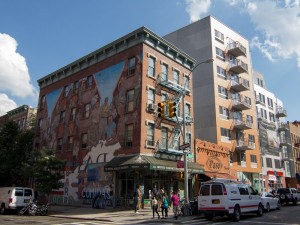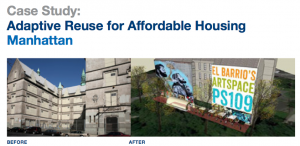We are pleased to announce that our recently-concluded social justice topic series on activism in East Harlem has been compiled into a free eBook, accessible here
 This eBook, the fourth in our series, deepens and expands the work of a community meeting at the CUNY School of Public Health on April 26, 2014. This meeting brought together volunteers, city officials, and faculty and staff from CUNY to discuss emergency response following a tragic gas explosion nearby that had killed 8 people the previous month. Participants met in groups to discuss the event, make recommendations for better emergency response in the future, and strengthen community partnerships. Afterwards, several people sat down with us to talk about their experience, which we produced as a series of podcasts.
This eBook, the fourth in our series, deepens and expands the work of a community meeting at the CUNY School of Public Health on April 26, 2014. This meeting brought together volunteers, city officials, and faculty and staff from CUNY to discuss emergency response following a tragic gas explosion nearby that had killed 8 people the previous month. Participants met in groups to discuss the event, make recommendations for better emergency response in the future, and strengthen community partnerships. Afterwards, several people sat down with us to talk about their experience, which we produced as a series of podcasts.
The active participation in the meeting was characteristic of the strong, invested community of East Harlem, also known as El Barrio. We drew inspiration from this event and highlighted other important activist work and pressing issues impacting the community, especially affordable housing and gentrification, and drug policy reform. In addition to the conversations with local volunteers, our series included interviews with a local journalist and two scholar-activists; featured the work of local filmmakers; highlighted a two-day forum on drug policy reform held at the New York Academy of Medicine; and discussed current events and policies impacting the neighborhood.
 This series portrays only a small portion of the dynamic activist work being done by local residents. To do justice to this rich community would take far longer. Luckily, this work is represented by the many community groups that are active in East Harlem and in everyday life in the neighborhood. We encourage you to start here and do more exploring on your own, both virtually and in person. Take a walk around the neighborhood and meet some of the amazing people who call it El Barrio.
This series portrays only a small portion of the dynamic activist work being done by local residents. To do justice to this rich community would take far longer. Luckily, this work is represented by the many community groups that are active in East Harlem and in everyday life in the neighborhood. We encourage you to start here and do more exploring on your own, both virtually and in person. Take a walk around the neighborhood and meet some of the amazing people who call it El Barrio.
Click here to use and share this resource!





